-
Title (Dublin Core)
-
U. S. anti-aircraft guns
-
Article Title and/or Image Caption (Dublin Core)
-
Title: Answer to air power
-
Subtitle: Better AA guns shooting its supremacy full of holes
-
extracted text (Extract Text)
-
THE supremacy of the airplane as a
weapon of attack on military objectives
is passing its peak. The rising might of
antiaircraft gunnery, massed, mobile, and
directed by mechanisms that have taken
human errors out of gunfire, has already
proved that military forces on land and sea
are defensible against onslaught from the air.
Ack-ack downs airplanes. The tide in
favor of defense on land and sea as against
attack from the air began to turn demon-
strably in September 1942. Astounding suc-
cesses of antiaircraft weapons, once the joke
of most airmen, were increasingly reported
in February 1943.
Brigadier General Hermon F. Safford,
chief of the Production Service, Office of the
Chief of Ordnance, reported February 15
that one United States Army multiple-gun
motor carriage in North Africa had downed
nine enemy aircraft. This carriage trans-
ported two .50 caliber machine guns and a
37-millimeter automatic cannon, mounted
coaxially. One enemy plane had been shot
down while the carriage was still on a
lighter, and another while it was in a sea
train during landing operations against at-
tack from the air. Seven were downed
when this mobile ack-ack unit reached shore.
A single battleship, until recently called
useless against massed air power by the
more fanatical followers of the prophet
Billy Mitchell, has downed 32 Japanese dive
bombers and torpedo planes in the South-
west Pacific, and successfully accomplished
her mission unscathed.
On February 10, 1943, Congressional lead-
ers were told that our war supplies for Rus-
sia were getting through to Murmansk in
greater quantities than ever, with almost
none of the shipping losses that occurred
before the autumn of 1942. The reason for
this was told in the U. S. Naval Institute
Proceedings for February by Rear Admiral
H. G. Thursfield of the British Navy.
Describing the arrival of a September
convoy at Murmansk, after fighting off
successive attacks by German land-based
planes, the Admiral said: “This operation
demonstrates that it is not impossible, by
means of shipborne aircraft and the fire of
ships’ guns, to provide an effective umbrella
even against massed attacks by land-based
air forces. It was clear that, on the whole,
defense had mastered attack. Bomber and
torpedo aircraft have not yet achieved mas-
tery of sea traffic.”
‘What is changing the balance of war be-
tween the forces of land and sea and air?
Antiaircraft gunnery of an accuracy and
volume that were nonexistent when the Japs
attacked Pearl Harbor and sank two British
warships off Malaya. A battery of United
States Army 90-millimeter guns in the Sol-
omons has downed one Japanese plane for
every 50 shots fired—a rate too fantastic to
be sustained. Downing one plane in 10,000
shots was a miracle in World War I.
Three factors are primarily responsible
for this sensational increase in the power of
ground gunnery against the air.
1. Scientists in research laboratories and
factories have made more progress
in the last 18 months than in many
years in developing electric and me-
chanical aids to accurate gunnery
against targets moving too swiftly
for men to hit them unaided.
2. The industrial systems of all
the combatant powers are turning
out these new developments in mass
quantities.
3. Military leaders have changed
their ideas of antiaircraft fire from
the tactics of merely stationary de-
fense to those of mobile attack as
well. They are now content no
longer to await the onslaught of
hostile aircraft upon their own in-
stallations. They are making their
antiaircraft equipment highly mo-
bile so it may be sent out airplane
hunting, just as men with faith in
their guns go out to hunt big game
from blinds or ambush.
The details of scientific advance
in mechanical direction of gunfire
are military secrets in every na-
tion. The fact of the advance is not.
On January 23, the New York Times pub- |
lished a dispatch from its London corre- |
spondent, James McDonald, telling of the |
rising power of defense against aircraft in
both London and Berlin, “The British,” he
said, “have developed a co-ordinated system
whereby ground gunners and day and night |
fighters . . . . make things distinctly un-
healthy for enemy bombers. Witness the
fact that 15 German raiders were shot down |
in the last raid, ten percent of the force that
came over. |
“Berlin is so strongly defended that when
British airmen are briefed to go there they |
whistle under their breath. They don't relish
the assignment.” |
Owing to new mechanisms, which will
measure how far away a plane may be, the
direction of its flight, and its speed with an
accuracy impossible for human beings, anti-
aircraft fire is becoming increasingly auto-
matic. These data, plus necessary corrections
such as lead computation for aiming ahead
of a moving target, can be transmitted by |
electric impulse to machinery which actual-
ly can aim and fire the guns. |
Scientific progress in directed gunfire has
now given ground forces weapons of ade-
quate quality for their job. Providing them
in mass for ships and troops is now under
way. When our first convoys went overseas,
they were almost naked of ack-ack weapons,
as compared with what they carry today.
The very guns had not been manufactured.
Today our naval vessels and armed mer-
chantmen bristle like hedgehogs. There are
rows of .30 caliber and 50 caliber machine
guns on many of our merchantmen, as well
as heavier weapons. Some of these .50's are
fired in pairs from a single mount.
Escorting naval vessels also carry 20-
millimeter Oerlikons, two-barreled Bofors,
four-barreled 11-inch cannon (known as
“Chicago pianos"), three-inch and five-inch
cannon of high velocity. Most of these larger
weapons have all the electric and mechan-
ical aids for range finding and lead com-
puting that have been pouring from
American, British, and Canadian factories.
The gunwales of some of our battleships,
cruisers, and aircraft carriers are literally
lined with rows of these weapons, and more
have been jammed into other positions on
superstructures. “Flak ships,” devoted sole-
ly to antiaircraft protection, have supple-
mented flagships. Naval practice, then, is
proving that the answer to dive bombers and
torpedo planes, which enthusiastic air-power
advocates once said had doomed the battle-
ship, is a devastating volume of ack-ack.
They have shown that an almost imperme-
able curtain of accurately aimed and con-
trolled fire may be set up over military
objectives, through which airplanes cannot
pass without terrific casualties.
The power of German antiaircraft gun-
nery supplements the Luftwaffe in protect-
ing” Germany's war factories, submarine
bases, railroad yards, and other military
objectives. Because of the two, combined,
Cologne still functions, as a factory center,
though bombed 112 times up to February 3,
1943. The Nazi submarine base at Lorient
had been bombed 65 times up to February 9,
and the naval base at Wilhelmshaven 71
times up to February 12.
Great block busters laid flat large areas.
The military objectives must still be de-
stroyed. Dispersed, camouflaged, buried
under masonry, protected by curtains of fire
from antiaircraft weapons and the lethal
wires from barrage balloons, they carry on.
Opinion within the United States War
Department concerning the value of ground
gunnery against airplanes has advanced so
far within the last two years that the Anti-
aircraft Command is one of the fastest-
growing arms of the service. Originally
organized under the Coast Artillery Corps,
Antiaircraft now far exceeds the size of the
parent organization. Under the command of
Major General Joseph A. Green, with head-
quarters at Richmond, Va. it is offering an
opportunity for troops in its ranks to train
for front-line service around the world.
Antiaircraft weapons and tactics are being
modernized so fast that there is constant
change in techniques.
Camp Davis, Wilmington, N. C., is one of
the principal training centers. A canton-
ment costing $17,000,000, its quota of officers
is at least 20,000 graduates yearly. There are
seven other unit training centers. Lieuten-
ant General Lesley J. McNair has an-
nounced that our antiaircraft forces will
double this year their total in 1942.
In the standard 90-millimeter gun, these
forces have a weapon of great effectiveness
at more than five miles. The gun was a
blueprint in 1937. There were fewer than
50 guns made when war broke out.
Today we are exporting them to our allies.
This is a magnificent weapon. It is a big
cannon, more than 15 feet long, firing about
24 pounds of high explosive almost six miles.
These shells explode on a time fuse set au-
tomatically by the fuse cutter according to
the altitude, speed, and direction of the tar-
get, calculated by mechanical means. As
they explode, they spray metal upward and
outward. The concussion of such a shell,
exploding within 100 yards of an airplane,
is enough to knock a pilot unconscious or
kill his motors.
For automatic weapons we have the 40-
millimeter Bofors and the .50 caliber ma-
chine gun. This Bofors has a vertical range
of more than four miles. Its projectile
‘weighs 2 1/4 pounds and is fed nto the maga-
zine in clips. It can fire easily 120 to 140
shots a_minute. All its shells are tracers.
The .50 caliber machine gun fires 500 to
600 rounds a minute, traveling 2.700 feet
per second, with one bullet in five usually a
tracer. Its armor-piercing bullets will pene-
trate a half inch of steel. One shot in New
Guinea went through a palm tree 18 inches
thick, and through the steel helmet of a
Japanese soldier. Hundreds of thousands of
these guns are now being provided American
armed forces to protect them against dive
‘bombers and low-lying aircraft.
‘While these three guns are standard, the
Army bas an even bigger cannon on the
way, which will down planes in the strat-
osphere.
Less than a year ago I stood under a tree
near an airdrome in Port Darwin, Australia,
and watched some Australian antiaircraft
gunners bring down two Japanese planes in
Tames. Tt was beautiful gunnery, and lovely
fireworks as the enemy came tumbling down
ablaze. Yet those Australian gunners were
using a height finder which all the nations
at war are trying today to replace, and
which all are using occasionally—including
our own.
“This height finder, a complicated 13-foot
tube, mounted on a tripod, is a marvel of
optical design, with many shiny glass
prisms, wedges, lenses, and shiny steel
gears and differentials. Three men manipu-
late it, and until a few months ago it prob-
ably represented the greatest advance in
range-finding apparatus in modern warfare.
Soon It will be as extinct as the dodo.
For all ita prisms and gears. its accuracy
depends ultimately on a peculiar quality of
eyesight in the human “helght-Gnder ob-
server” commanding it. This is called stereo-
scopic vision, or stereo-acuity. The quality,
found most frequently in baseball, tennis,
and handball players, is that of judgment of
distance. A man who is a good observer
one day isa bad one another, just as a
home-run hitter in one inning strikes
out in another. Mechanical measurements
are now being substituted, gradually, in
major-league warfare. Height-finder Ob-
servers, being human, are on their way out.
When I was at Port Moresby, less than a
year ago, Jap planes successfully strafed
‘Australian planes on the ground and in the
harbor. An American ack-ack officer, re-
turned from there recently, told me that
once our antiaircraft batteries were in-
stalled, the Jap planes were driven upward
until they never bombed at lower than 22,-
000 feet. When the flak was too thick, they
jettisoned their bombs before reaching their
objectives. Then they fled. In four months
at Port Moresby, after installation of Amer-
ican ack-ack, American ground forces lost
not a single man from enemy air attack,
and the Australians only four men.
Defensively, then, we are proving our
ability to drive enemy planes upward and
away from restricted military objectives,
and to diminish the effectiveness of their
bombing and machine-gunning. The next
great advance in the use of ack-ack is going
to be in offensive tactics, and this will be an
American innovation in warfare—just as
the blitz by armored vehicles was of Amer-
ican origin theoretically, but first exploited
by the Germans.
When Major General George S. Patton ar-
rived in North Africa last November, he
quickly improvised there a mobile ack-ack
battalion to go forward in the fight accom-
panying our armored forces. He simply put
automatic antiaircraft guns on self-propelled
mounts—on trucks, jeeps, and half-tracks.
With such a lead the future course of these
tactics is sure.
Mobile ack-ack units will serve with all
branches of the Army ground forces—in-
fantry, engineers, and mechanized cavalry.
Specially designed trucks, tractors, and
other motor vehicles, capable of carrying
the guns over any terrain, will be strung
along the lines of march between bases and
the fighting fronts, going forward as the
troops advance and retiring as they with-
draw. Two, four, or even six guns may be
mounted on single vehicles.
Tactically, advanced antiaircraft batteries
will be found just behind the reconnaissance
units in moving forward, and remain with
the extreme rear guard in any withdrawals.
These ack-ack units will be used to protect
engineers in building bridges or strengthen-
ing old ones; pro-
tecting the infantry in river crossings or
in ravines; protecting supply dumps and
armored supply trains.
Taking advantage of ground that favors
concealment whenever possible, their share
in carrying the fight to the enemy will be
to go where hostile planes may be expected,
and to shoot them down when they come
within range.
More fire power against airplanes is be-
ing placed in the hands of the infantry,
engineers, and armored troops, to supple-
ment that of the ack-ack battalions. Newly
designed tactical vehicles for all these arms
are having emplacements for .50 caliber
machine guns built into them. So in our
ground forces, one man in ten may be found
equipped and ready to fight hostile aircraft,
before the war ends.
Not only will guns go forward, but search-
lights and barrage balloons, too. They will
be flown to the farthest advanced air fields,
just back of the airborne engineers, Em-
phasis of American military thought just
now lies upon very-low-altitude balloons, to
fly above troops, trains, ships, airfields, and
landing strips. These are about half the
size of the big “flying elephants” used to
guard docks and factories. Quickly raised
and lowered from jungle airfields, they can
free our fighting planes from some burdens
of defense.
Our searchlights, throwing 800,000,000
candlepower of light, nine miles high under
favorable conditions, from their five-foot
reflecting mirrors, are essential to the team.
But the new guns, mechanically directed,
massed, and mobile, in quantity enough
wherever they are needed, are the ultimate
answer to enemy air power. Working with
our own air and ground forces as a tactical
team, as they are now being trained to work,
our antiaircraft troops can help win the war
‘where ultimate victory has to be won—on |
the ground, on enemy soil. |
-
Contributor (Dublin Core)
-
Allen Raymond (Article Writer)
-
Language (Dublin Core)
-
eng
-
Date Issued (Dublin Core)
-
1943-05
-
pages (Bibliographic Ontology)
-
66-72,214
-
Rights (Dublin Core)
-
Public Domain (Google Digitized)
-
Archived by (Dublin Core)
-
Matteo Ridolfi
-
Marco Bortolami (editor)
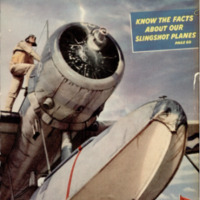 Popular Science Monthly, v. 142, n. 5, 1943
Popular Science Monthly, v. 142, n. 5, 1943
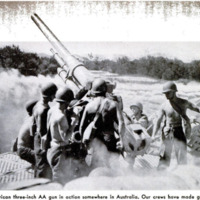 Schermata 2022-02-24 alle 15.16.47.png
Schermata 2022-02-24 alle 15.16.47.png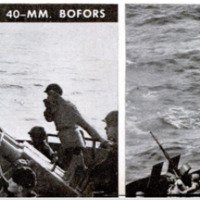 Schermata 2022-02-24 alle 15.16.56.png
Schermata 2022-02-24 alle 15.16.56.png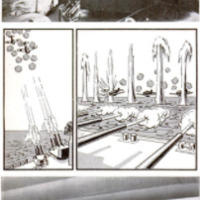 Schermata 2022-02-24 alle 15.17.09.png
Schermata 2022-02-24 alle 15.17.09.png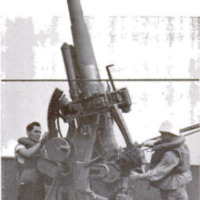 Schermata 2022-02-24 alle 15.17.22.png
Schermata 2022-02-24 alle 15.17.22.png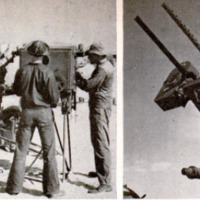 Schermata 2022-02-24 alle 15.17.30.png
Schermata 2022-02-24 alle 15.17.30.png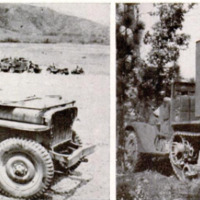 Schermata 2022-02-24 alle 15.17.35.png
Schermata 2022-02-24 alle 15.17.35.png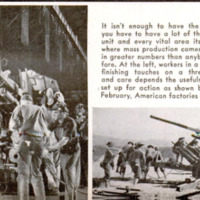 Schermata 2022-02-24 alle 15.17.42.png
Schermata 2022-02-24 alle 15.17.42.png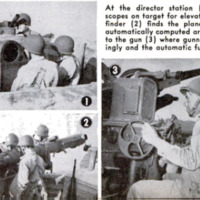 Schermata 2022-02-24 alle 15.17.55.png
Schermata 2022-02-24 alle 15.17.55.png







